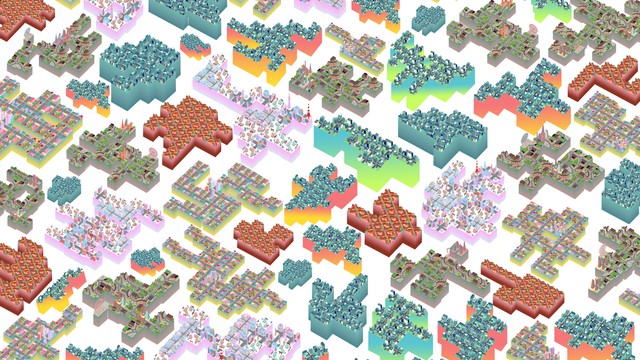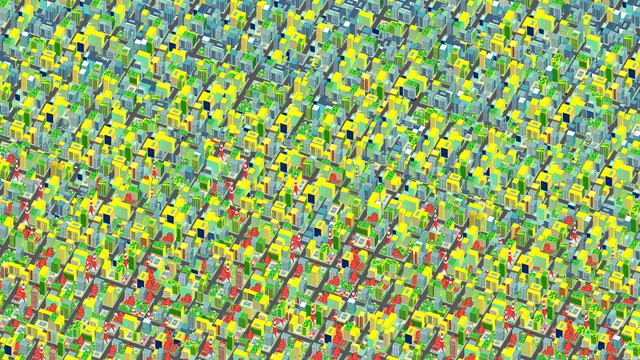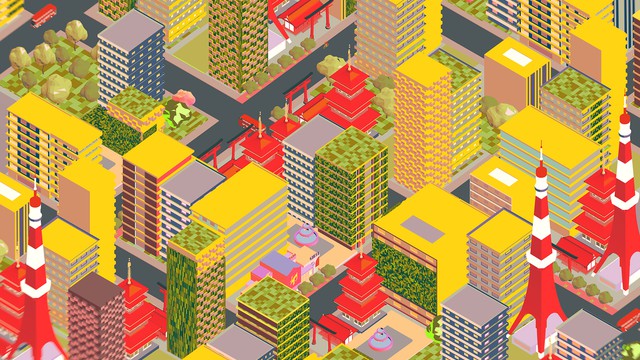Procedural Liveability 2020, United Kingdom, London
Videogame project focusing on 'Procedural Generation Technique + Liveability metrics of cities'







'Procedural Liveability' is a videogame project that primarily questions the liveability of our cities and critically questions the reliability of the globally accepted liveability ranking systems. The project emphasizes the need for redefining the criteria for ranking the liveability level of a city by focusing on the spatial and social metrics as well as the need for considering the contextual implications of the strategies before applying them onto the city, and the need for a more people-centric approach in making decisions related to altering the city's liveability level.
As we question the resilience of our cities and their ability to adapt to the global pandemic, ‘Procedural Liveability’ exposes the liveability metrics awarded to cities. Various aspects that constitute the liveability metrics of a city are explored in this videogame project which is intended to be an experimental tool to test the strategies that would alter the liveability level of a city. Videogame being an interactive digital medium is chosen for receiving the user’s perspective as the liveability of a city is determined by its inhabitants. The game critically questions the reliability of the globally accepted liveability ranking systems that primarily focus on the spatial aspects and their universal implications, by illuminating the significance of context and the impact of the city’s spatial alterations on the hidden social metrics. Reflecting on the strategies adopted by different global cities, the players acquire tools from these ‘scannable’ cities to apply and test the effectiveness of the strategies to transform a city by adjusting its spatial parameters to impact its liveability metrics by deploying a ‘liveability drone’. The game randomly chooses one of the three ‘transformable cities’ geolocated in different parts of the globe for the player to transform, each responding differently to the strategies applied that are drawn from real urban scenarios. The cities in the game are procedurally generated, imparting randomness and variance as each gameplay would generate different spatial configurations of the same city. The game also throws light on some of the challenges faced by cities nowadays and the strategies that could be implemented to revive the city. The player who proceeds by modifying the transformable city to adjust its visible spatial metrics using the tools gained from the scannable cities is presented with an annual liveability report revealing the ‘Spatial adjusted liveability rank’, consequences on social metrics, and overall liveability level. The project emphasizes the need for redefining the criteria for ranking the liveability level of a city by focusing on the spatial and social metrics as well as the need for considering the contextual implications of the strategies before applying them to the city.
https://www.youtube.com/watch?v=WGgJkV2WPsU&t=1s
https://www.instagram.com/p/CHLLJVsnztQ/?utm_source=ig_web_copy_link
http://www.koozarch.com/interviews/procedural-liveability/
Poster
Details
Team members : Aafreen Fathima
Supervisor : Aafreen Fathima, Luke Perason, Sandra Youkhana, Agostino Nickl
Institution : Bartlett School of Architecture, UCL
Descriptions
Technical Concept : Videogame is a medium that allows for user interaction in an effective way by immersing one in the act of play. It's important to know people’s perspectives or ideas of a liveable city as the city's liveability is determined by its inhabitants. Their perspective could be received by the way the game is played, by knowing the tools and strategies applied to alter the liveability level of the city. Various speculative scenarios are created in the game for which the player is liable to respond which then lets us know how people would react to certain design decisions. The cities in the game are procedurally generated using the 'Wave Function Collapse' algorithm. Each gameplay generates different configurations of the same cities adding a sense of variance and randomness to the game. The data based on which the cities are generated and the way they respond are based on real urban scenarios.
Visual Concept : The game contains abstracted forms of different global cities. These cities are abstracted based on the key features that add to the 'imageability' of the city as defined by the Urban Planner Kevin Lynch. The colour schemes of the cities are distinctive and are meant to evoke the sense of the predominant character and vibe of the cities. For instance, Los Angeles is given a more vibrant colour scheme for its sunny nature whereas London has more greyish tones for its predominant cloudy nature. Overall, the visual goal is to create an exciting and visually stimulating gaming experience.
Credits
Aafreen Fathima
Aafreen Fathima
Aafreen Fathima
Aafreen Fathima
Aafreen Fathima
Aafreen Fathima
Aafreen Fathima
Aafreen Fathima